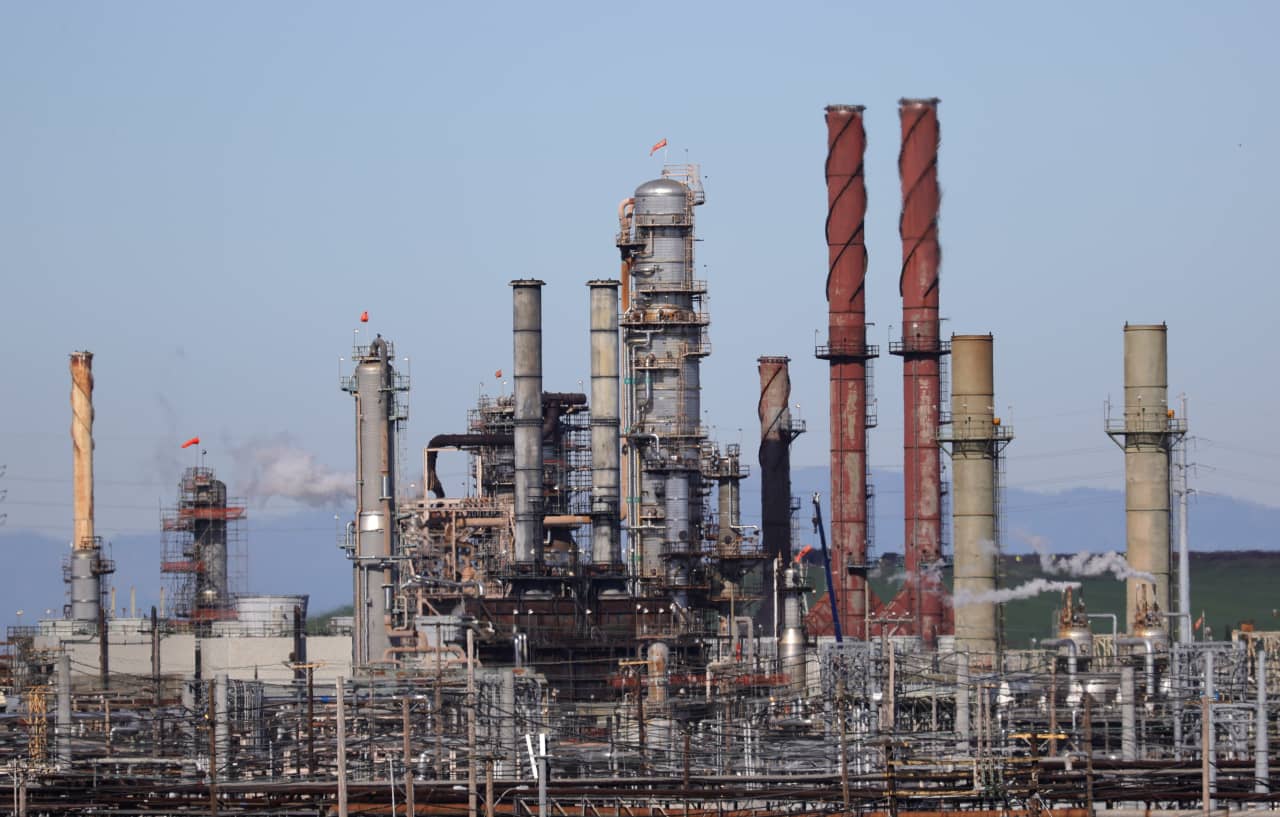[ad_1]
Northern California’s Bay Area Air Quality Management District on Tuesday said it had reached separate agreements with Chevron and PBF Energy that will settle legal challenges the refiners brought against the agency’s regulations.
BAAQMD described the agreements as a “decisive victory” for public health, saying they will result in significant reductions in airborne particulate matter emissions.
The agency said that under the settlement Chevron
CVX,
will pay the highest violation penalty in BAAQMD’s history, a total that could rise to as much as $130 million if the company delays compliance. PBF
PBF,
agreed to fully meet the regulations and will demonstrate compliance by implementing a continuous monitoring system. The companies also agreed to pay half of the district’s legal fees, up to $500,000 apiece.
BAAQMD said Chevron payments under the deal will increase if it fails to comply with Regulation 6, Rule 5 provisions when they take effect in July 2026. It said the “unprecedented penalties” will require the refining giant to pay $17 million a year for the first three years of non-compliance. That will rise to $32 million in the fourth year.
In addition, the deal also requires Chevron to contribute $20 million to the Community Air Quality Fund plus $3.5 million annually for up to four years to finance projects designed to reduce airborne particulates in regions affected by its operations.
Chevron also will pay a $20 million fine for 678 other violations unrelated to the ruling and has committed to take a “series of measures” to reduce flaring incidents, the agency said.
Representatives from Chevron and PBF were not immediately available for comment.
“The historic penalties and successful defense of our life-saving Rule 6-5 are a win for air quality in the Bay, especially those living in the Richmond and Martinez-area communities,” Davina Hurt, chair of the Air District Board of Directors, said in a news release.
“The establishment of a Community Air Quality Fund for Richmond further emphasizes our dedication to address the specific air quality concerns of the communities most affected, improve public health and to advance environmental justice.”
Regulation 6, Rule 5 limits the emissions of condensable particulate matter emissions from petroleum refinery fluidized catalytic cracking units, as well as the emission of secondary particulate matter precursors, the agency said.
“The Air District’s landmark Rule 6-5 reduces particulate matter emissions from petroleum refinery operations and is the most stringent rule of its kind in the country,” BAAQMD said. “This groundbreaking rule outlines specific requirements for reducing, monitoring, and reporting emissions of various pollutants including sulfur compounds and particulate matter from refinery operations.”
This content was created by Oil Price Information Service, which is operated by Dow Jones & Co. OPIS is run independently from Dow Jones Newswires and The Wall Street Journal.
[ad_2]
Source link

